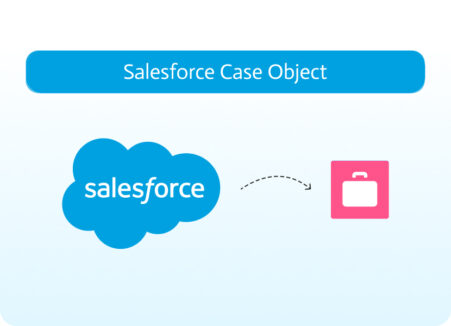

B2B Integration: Top 9 Use Cases
In today’s fast-paced business world, seamless integration between different systems and partners is essential. B2B integration enables companies to automate and streamline operations, enhance collaboration, and drive efficiency. Here, we explore nine compelling use cases for B2B integration, highlighting the applications involved in each scenario and detailing how these integrations benefit businesses.
1. Streamlining Supply Chain Management
Applications Involved: SAP ERP, Oracle SCM Cloud
Imagine a global manufacturing company that relies on multiple suppliers to provide raw materials. By integrating its SAP ERP system with Oracle SCM Cloud used by its suppliers, the company can streamline its supply chain process. When the company generates a purchase order in SAP ERP, it is automatically updated in Oracle SCM Cloud. This real-time integration ensures suppliers receive orders instantly, reducing delays and misunderstandings.
Benefits to the Business:
- Improved Efficiency: Automation eliminates manual data entry, reducing errors and speeding up order processing.
- Better Inventory Management: Real-time updates help maintain optimal inventory levels, preventing stockouts and overstock situations.
- Enhanced Supplier Relationships: Transparent communication ensures suppliers meet delivery expectations, fostering stronger partnerships.
2. Enhancing Customer Support
Applications Involved: Salesforce, Zendesk
Retail chains often struggle to provide timely and accurate support for their customers. By integrating Salesforce with Zendesk used by a third-party call center, retail businesses can automate customer support. When a customer contacts the call center, the agent can access Salesforce data through Zendesk, providing real-time updates and resolutions.
Benefits to the Business:
- Increased Customer Satisfaction: Prompt and accurate responses improve overall customer experience.
- Reduced Workload for Support Staff: Automation frees up support agents to handle more complex issues.
- Enhanced Brand Loyalty: Excellent customer service fosters loyalty and encourages repeat business.
3. Automating Financial Transactions
Applications Involved: QuickBooks, Bill.com
A mid-sized company can automate its financial processes by integrating QuickBooks for accounting with Bill.com used by its payment processing partner. When an invoice is generated in QuickBooks, it is automatically sent to Bill.com for payment processing. This ensures seamless financial operations and accurate record-keeping.
Benefits to the Business:
- Accurate Financial Records: Automation ensures all transactions are recorded correctly, reducing errors.
- Time Savings: Automating financial processes eliminates manual data entry, freeing up time for the finance team.
- Improved Cash Flow Management: Real-time updates on transactions help better manage cash flow and financial planning.
4. Facilitating Vendor Management
Applications Involved: Ariba, Coupa
Large corporations often work with multiple vendors and need an efficient way to manage them. By integrating Ariba procurement software with Coupa used by their vendors, companies can streamline vendor management. When a purchase order is created in Ariba, it is automatically sent to Coupa for the vendor to acknowledge and provide updates.
Benefits to the Business:
- Enhanced Procurement Efficiency: Automating purchase orders reduces manual intervention, speeding up procurement cycles.
- Improved Supplier Collaboration: Real-time communication ensures orders are acknowledged and processed promptly.
- Cost Savings: Streamlined processes reduce administrative costs and improve overall purchasing efficiency.
5. Improving Inventory Management
Applications Involved: NetSuite, TradeGecko
Retailers often face challenges in maintaining optimal inventory levels. By integrating NetSuite ERP with TradeGecko used by their distributors, businesses can achieve real-time synchronization of inventory data. When inventory levels change in TradeGecko, updates are instantly reflected in NetSuite.
Benefits to the Business:
- Accurate Inventory Tracking: Real-time synchronization ensures inventory levels are always up to date.
- Operational Efficiency: Automation minimizes manual data entry, allowing staff to focus on other critical tasks.
- Cost Reduction: Better inventory management leads to reduced holding costs and improved cash flow.
6. Streamlining Order Fulfillment
Applications Involved: Magento, ShipBob
E-commerce businesses often partner with third-party logistics providers for order fulfillment. By integrating Magento with ShipBob, companies can automate the fulfillment process. When an order is placed on Magento, it is automatically sent to ShipBob for processing and shipping.
Benefits to the Business:
- Faster Order Processing: Automation speeds up fulfillment, reducing the time from order placement to shipment.
- Improved Accuracy: Automated workflows reduce errors in shipping details, ensuring correct deliveries.
- Enhanced Customer Satisfaction: Faster and more accurate fulfillment improves the overall customer experience.
7. Enhancing Partner Collaboration
Applications Involved: Microsoft Dynamics 365, Slack
Effective communication is key to successful partnerships. By integrating Microsoft Dynamics 365 with Slack used by a business partner, companies can enhance collaboration. When a new opportunity or lead is created in Dynamics 365, a notification is sent to a Slack channel used by the partner.
Benefits to the Business:
- Improved Communication: Real-time notifications ensure all team members are promptly informed.
- Increased Responsiveness: Quick access to information allows the sales team to respond faster.
- Enhanced Team Collaboration: Integrating business systems with communication platforms fosters better teamwork and coordination.
8. Automating Compliance Reporting
Applications Involved: SAP S/4HANA, Avalara
Compliance reporting can be a complex process for businesses working with multiple partners. By integrating SAP S/4HANA with Avalara’s tax compliance software used by their accounting firm, companies can automate tax calculations and filings. Transaction data from SAP S/4HANA is automatically sent to Avalara, which handles compliance reporting.
Benefits to the Business:
- Reduced Compliance Burden: Automation simplifies the compliance process, reducing time and effort.
- Increased Accuracy: Automated systems minimize errors in tax reporting, ensuring compliance with regulations.
- Cost Savings: Streamlining compliance processes reduces administrative costs and mitigates the risk of fines.
9. Optimizing Marketing Campaigns
Applications Involved: Marketo, Google Analytics
Marketing teams often work with agencies to optimize campaigns. By integrating Marketo with Google Analytics used by their marketing agency, companies can gain detailed insights into campaign performance. Campaign data from Marketo is synced with Google Analytics, providing comprehensive performance metrics.
Benefits to the Business:
- Data-Driven Decisions: Access to detailed performance data enables informed decision-making.
- Improved Campaign Effectiveness: Insights help identify successful strategies and areas for improvement.
- Increased ROI: Optimizing marketing efforts enhances the return on investment.
Conclusion
B2B integration offers numerous benefits across various business functions, from supply chain management to marketing. By leveraging AI-driven, no-code iPaaS platforms, companies can simplify the integration process, making it accessible to non-technical users and enhancing operational efficiency. These nine use cases demonstrate the potential of B2B integration to transform business operations and drive growth.
FAQs about B2B Integration
How does B2B integration benefit supply chain management?
B2B integration ensures real-time data exchange between manufacturers and suppliers, improving order accuracy, reducing stockouts, and enhancing overall supply chain efficiency.
What are the key challenges in implementing B2B integration?
Challenges include ensuring API availability and compatibility, maintaining coordination with external partners, and adapting to changes in partners’ systems.
How can non-technical users manage B2B integrations?
AI-driven iPaaS platforms use natural language processing and intuitive interfaces, allowing non-technical users to create and manage integrations without coding, making the process more accessible and efficient.
By understanding and implementing these use cases, businesses can effectively leverage B2B integration to streamline operations, enhance collaboration, and drive growth in today’s competitive landscape.


